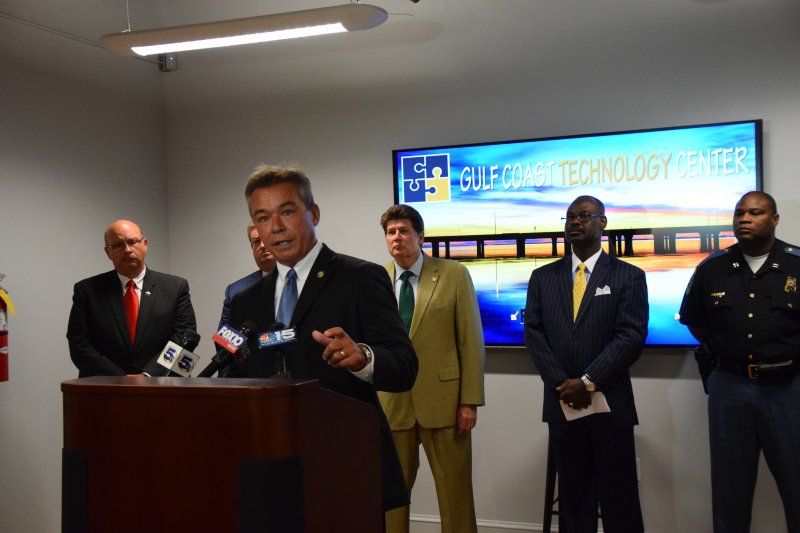Aug 16th, 2018

In June 2017, the Mobile Police Department, U.S. Secret Service Mobile Resident Office and Baldwin County Sheriff’s Office recognized the need for a regional law enforcement center in the Gulf Coast area that would be built on establishing multi-agency relationships and designed to use technology to combat violent crime. This week, the result of months of planning and collaboration has come to fruition with the opening of the Gulf Coast Technology Center.
Best described as a partnered, collaboration-focused venture that brings the primary missions of the partnering agencies to one common field of operation, the Gulf Coast Technology Center has three initial centers of focus.
With the Anti-Violence Technology Center, new and emerging technology will be utilized to combat, prevent and investigate violent offenses. It will rapidly identify the violent offenders along the Gulf Coast. The Threat Mitigation and Targeted Violence Prevention Center will specifically use technology to combat school-related and workplace-centered threats and targeted violence. Lastly, the Cyber-Enabled Crime, Network and Digital Media Forensics Center will focus on cyber and financial crime.
“The Secret Service is proud to join efforts with our law enforcement partners in Mobile,” said Michael Williams, Special Agent in Charge of the U.S. Secret Service Birmingham Field Office. “We are steadfast in our commitment to support this initiative to serve the people of the Gulf Coast Region by way of joint cyber-enabled financial crime investigations and through resources made possible through the Secret Service National Computer Forensics Institute right here in Alabama.”
Last year, Mayor Sandy Stimpson made a promise that the city would abide by the 21st Century Police Model. One of the six pillars of 21st Century Policing is technology.
“The Gulf Coast Technology Center will use technology like it has never been used before allowing us to safeguard our citizens and reduce crime throughout our community,” Stimpson said. “I am thankful to the several partners for their collaboration and commitment to create a safer region for all.”
Mobile’s Public Safety Executive Director James Barber explained that crime taking place across jurisdictional boundaries can be difficult to solve without collaboration. “With the creation of the Gulf Coast Technology Center we have instant interagency cooperation,” Barber said. “We can pool our resources together for a more rapid apprehension of criminal suspects.”
The state-of-the-art facility will house cutting-edge technology and equipment, and provide a collaborative work environment for members of the law enforcement community, academia, and the private industry to share information, new technology, case work, and investigative techniques. This cooperative endeavor hopes to serve as a model for other regions across the country.
“The Gulf Coast Technology Center represents the valued relationships and partnerships that have joined forces together, through collaboration and state-of-the-art technology, to combat violent crime, emerging threats and cyber-criminals all for the purpose of making our community safer,” said Kevin Levy, Commander of the Mobile Police Department Technology & Cyber-Intelligence Section. “When we work together with our law enforcement partners, private industry stakeholders, and the best and brightest in academia we can truly achieve great things.”
Some of the other partners include the Foley Police Department, U.S. Border Patrol, University of South Alabama Police Department, Saraland Police Department, Fairhope Police Department, Alabama Law Enforcement Agency, FBI, U.S. Attorney’s Office, U.S. Postal Inspection and the Mobile County Sheriff’s Office.
Levy added that the Gulf Coast Technology Center will function as a toolbox for the latest intelligence-led strategies. The partners involved also consist of faculty experts from universities studying the science of combating violent crime using technology.
The facility includes a collaboration meeting room, lab, expert training room and Microsoft/Google workspace. The current design allows for growth as the need for additional focus areas is required.
